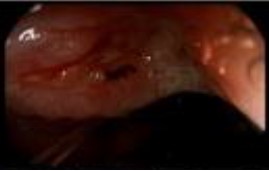Tuesday Poster Session
Category: Stomach and Spleen
P6406 - A Rare Case of Stage IV Gastric Adenocarcinoma With Signet Ring Cell Carcinoma in a Young Woman
Tuesday, October 28, 2025
10:30 AM - 4:00 PM PDT
Location: Exhibit Hall
.jpg)
Jennifer Hou, MD, PhD (she/her/hers)
HCA Healthcare Riverside Community Hospital
Riverside, CA
Presenting Author(s)
Keisha L.. Baldeosingh, MD, Jennifer Hou, MD, PhD
HCA Healthcare Riverside Community Hospital, Riverside, CA
Introduction: Gastric cancer remains a significant global health burden, affecting 15.8 men and 7 women per 100,000 individuals/year. Over 95% of cases are diagnosed after age 40, with an average age of diagnosis at 68. However, in patients < 40 who are disproportionately female, the disease often presents late-stage. Despite therapeutic advances, prognosis remains poor. In the United States, the 5-year survival rate is only 32%. This is largely due to late-stage diagnosis; < 25% of cases are detected prior to submucosal invasion when curative resection is still possible. Gastric signet-ring-cell carcinoma (GSRCC) is a rare and poorly cohesive variant of gastric adenocarcinoma. GSRCC accounts for 10% of cases of gastric cancer. Although associated with aggressive behavior and worse outcomes in advanced disease, early-stage GSRCC may show lower rates of lymph node metastasis and have better prognoses than other poorly differentiated gastric cancers.
Case Description/
Methods: The patient was a 31-year-old woman with hypertension and gastroesophageal reflux. Urease breath test was H.pylori positive. Given poor tolerance to eradication therapy, she underwent an upper endoscopy (EGD) which showed a 3 cm ulcer in the gastric body (Fig. 1) and evidence of bleeding. Pathology showed moderately differentiated invasive adenocarcinoma, negative for H.pylori. Diagnostic laparoscopy revealed peritoneal carcinomatosis and pathology noted signet ring carcinoma. Given brain and peritoneal metastases, she received chemoradiation (FOLFOX). She developed multi-organ failure and multi-factorial shock, was transitioned to comfort care, and subsequently passed away.
Discussion: GSRCC is more common in young women than non-SRCC. Early-stage GSRCC lacks typical clinical features; most patients report chronic gastritis-like symptoms (i.e. abdominal pain/distension) which can be misdiagnosed as gastritis and peptic ulcer. Most patients are diagnosed at an advanced stage. Early GSRCC have similar endoscopic features to other types of undifferentiated carcinomas. Magnifying endoscopy with narrow-band imaging can enhance detection. Endoscopic submucosal dissection (ESD) has become the optimal treatment for early disease. For non-curative ESD, gastrectomy is recommended.
This case highlights the aggressive nature and poor prognosis of late-stage GSRCC in a young patient. Clinicians should maintain a high index of suspicion and emerging guidelines emphasizing early detection may improve outcomes through timely diagnosis and intervention.

Figure: Fig. 1. Endoscopic evaluation. Upper endoscopy revealed a three cm ulcer with raised borders located in the gastric body.
Disclosures:
Keisha Baldeosingh indicated no relevant financial relationships.
Jennifer Hou indicated no relevant financial relationships.
Keisha L.. Baldeosingh, MD, Jennifer Hou, MD, PhD. P6406 - A Rare Case of Stage IV Gastric Adenocarcinoma With Signet Ring Cell Carcinoma in a Young Woman, ACG 2025 Annual Scientific Meeting Abstracts. Phoenix, AZ: American College of Gastroenterology.
HCA Healthcare Riverside Community Hospital, Riverside, CA
Introduction: Gastric cancer remains a significant global health burden, affecting 15.8 men and 7 women per 100,000 individuals/year. Over 95% of cases are diagnosed after age 40, with an average age of diagnosis at 68. However, in patients < 40 who are disproportionately female, the disease often presents late-stage. Despite therapeutic advances, prognosis remains poor. In the United States, the 5-year survival rate is only 32%. This is largely due to late-stage diagnosis; < 25% of cases are detected prior to submucosal invasion when curative resection is still possible. Gastric signet-ring-cell carcinoma (GSRCC) is a rare and poorly cohesive variant of gastric adenocarcinoma. GSRCC accounts for 10% of cases of gastric cancer. Although associated with aggressive behavior and worse outcomes in advanced disease, early-stage GSRCC may show lower rates of lymph node metastasis and have better prognoses than other poorly differentiated gastric cancers.
Case Description/
Methods: The patient was a 31-year-old woman with hypertension and gastroesophageal reflux. Urease breath test was H.pylori positive. Given poor tolerance to eradication therapy, she underwent an upper endoscopy (EGD) which showed a 3 cm ulcer in the gastric body (Fig. 1) and evidence of bleeding. Pathology showed moderately differentiated invasive adenocarcinoma, negative for H.pylori. Diagnostic laparoscopy revealed peritoneal carcinomatosis and pathology noted signet ring carcinoma. Given brain and peritoneal metastases, she received chemoradiation (FOLFOX). She developed multi-organ failure and multi-factorial shock, was transitioned to comfort care, and subsequently passed away.
Discussion: GSRCC is more common in young women than non-SRCC. Early-stage GSRCC lacks typical clinical features; most patients report chronic gastritis-like symptoms (i.e. abdominal pain/distension) which can be misdiagnosed as gastritis and peptic ulcer. Most patients are diagnosed at an advanced stage. Early GSRCC have similar endoscopic features to other types of undifferentiated carcinomas. Magnifying endoscopy with narrow-band imaging can enhance detection. Endoscopic submucosal dissection (ESD) has become the optimal treatment for early disease. For non-curative ESD, gastrectomy is recommended.
This case highlights the aggressive nature and poor prognosis of late-stage GSRCC in a young patient. Clinicians should maintain a high index of suspicion and emerging guidelines emphasizing early detection may improve outcomes through timely diagnosis and intervention.

Figure: Fig. 1. Endoscopic evaluation. Upper endoscopy revealed a three cm ulcer with raised borders located in the gastric body.
Disclosures:
Keisha Baldeosingh indicated no relevant financial relationships.
Jennifer Hou indicated no relevant financial relationships.
Keisha L.. Baldeosingh, MD, Jennifer Hou, MD, PhD. P6406 - A Rare Case of Stage IV Gastric Adenocarcinoma With Signet Ring Cell Carcinoma in a Young Woman, ACG 2025 Annual Scientific Meeting Abstracts. Phoenix, AZ: American College of Gastroenterology.

